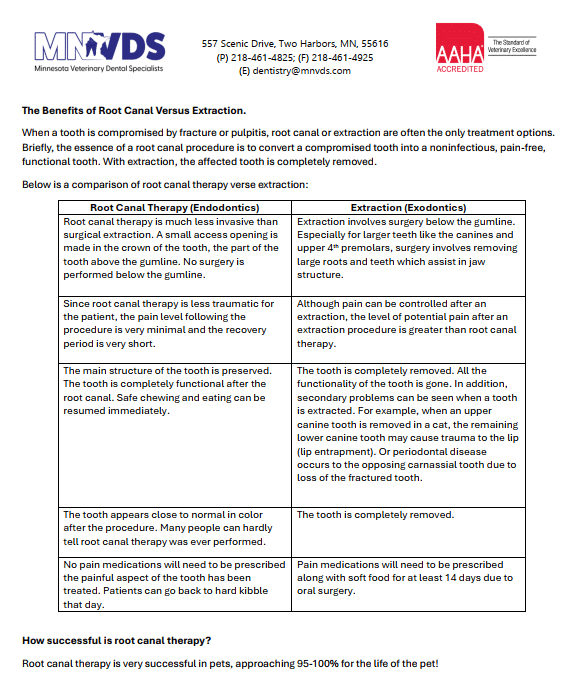Root Canal Therapy
The goal of Root Canal Therapy is to carefully debride and disinfect the pulp chamber and root canal system of the affected tooth, and then seal it with material that will prevent future internal infection of the endodontic system of the tooth from recurring. The peri-apical pathology that develops from endodontic infections will be expected to self-resolve once the chronic source of infection from inside the tooth is eliminated. Radiographic evidence of healing should be evident in approximately 6 months but may take longer to completely heal. In some cases, the procedure is not successful and additional surgical care may be indicated. If you have questions if your pet is a candidate for this procedure, ask our doctor team.
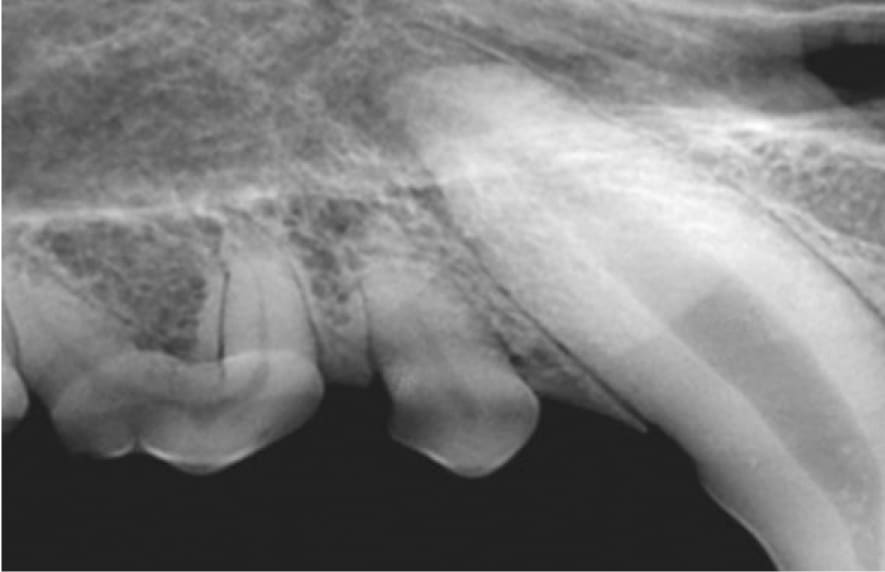
Before
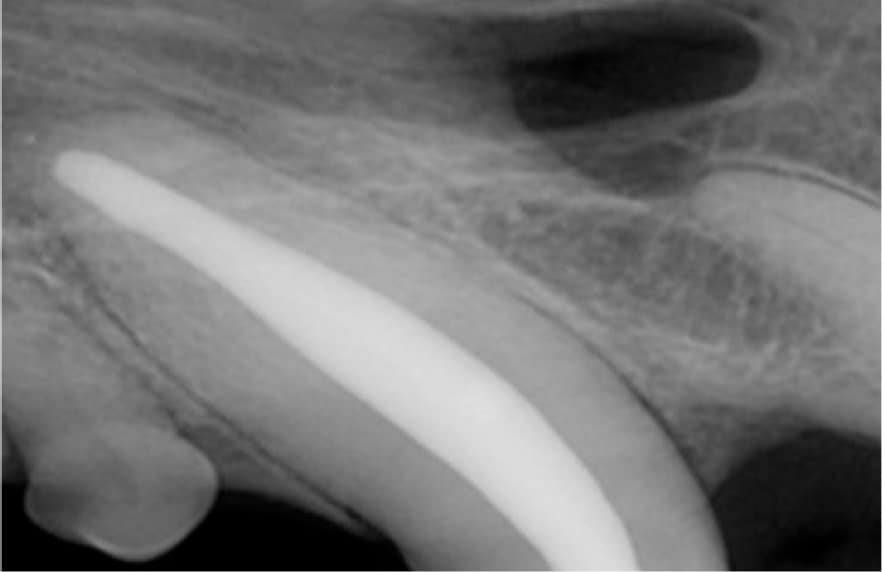
After
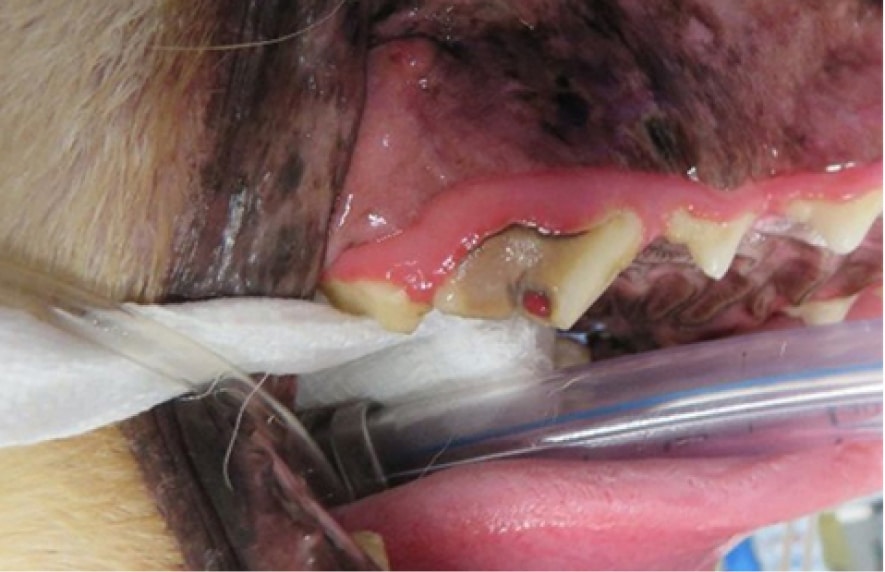
Before
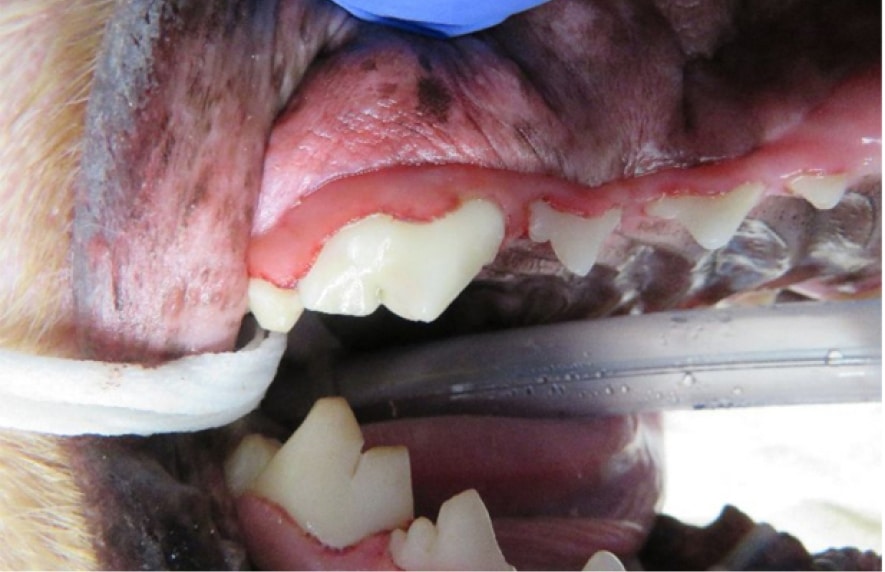
After
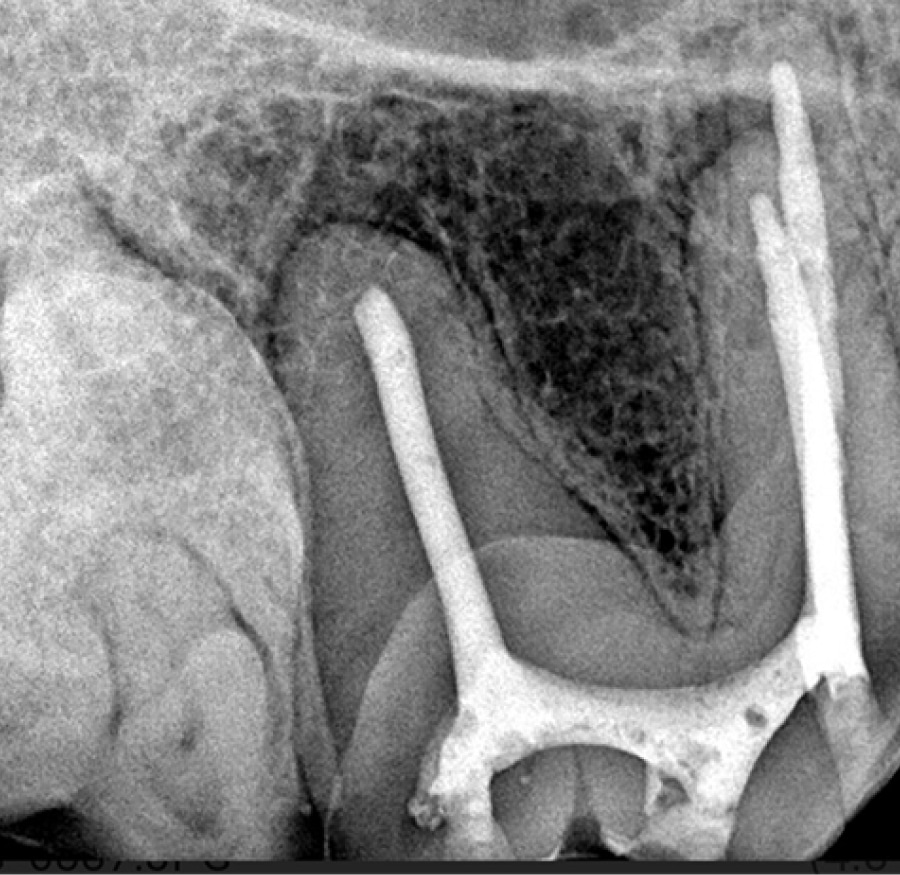
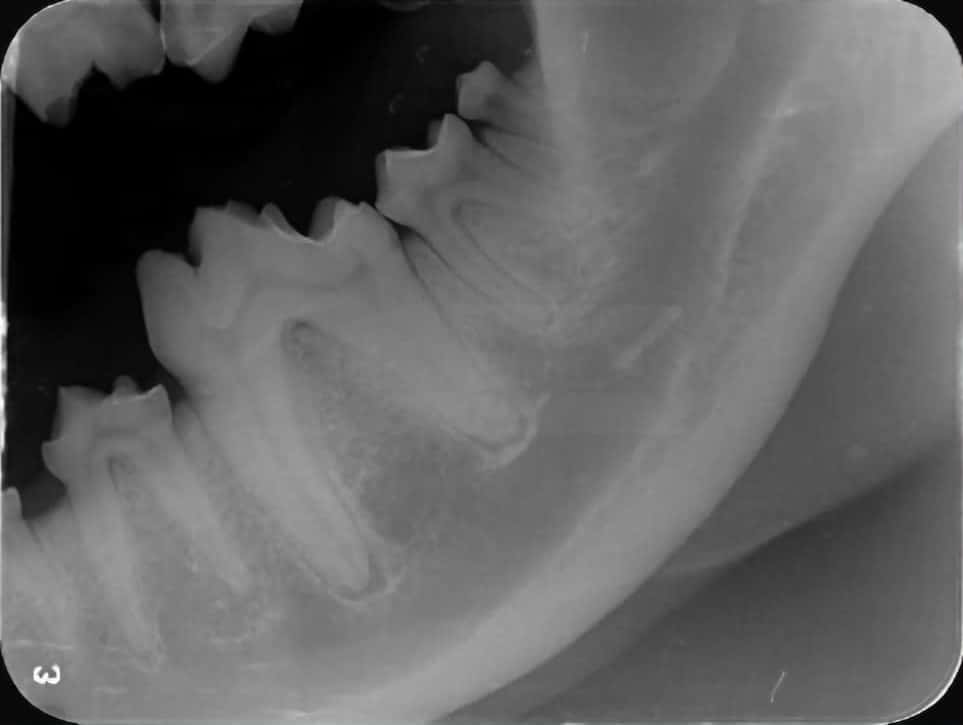
Before
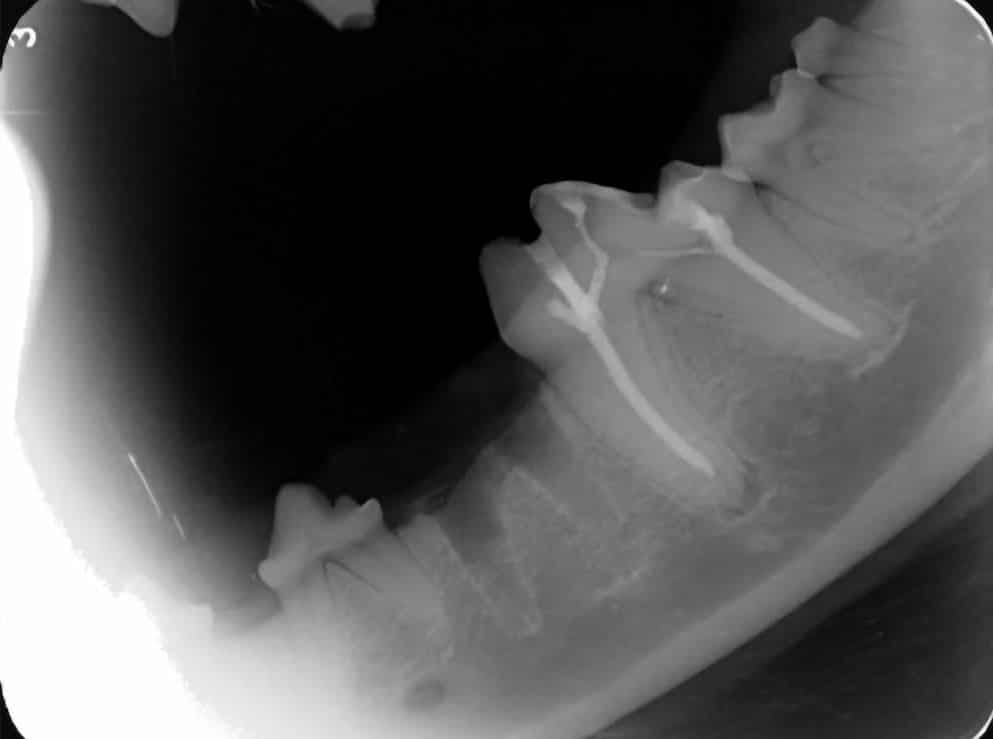
After
The Benefits of Root Canal Versus Extraction.
Root Canal Therapy (Endodontics)
Root canal therapy is much less invasive than surgical extraction. A small access opening is made in the crown of the tooth, the part of the tooth above the gumline. No surgery is performed below the gumline.
Since root canal therapy is less traumatic for the patient, the pain level following the procedure is very minimal and the recovery period is very short.
The main structure of the tooth is preserved. The tooth is completely functional after the root canal. Safe chewing and eating can be resumed immediately.
The tooth appears close to normal in color after the procedure. Many people can hardly tell root canal therapy was ever performed.
No pain medications will need to be prescribed the painful aspect of the tooth has been treated. Patients can go back to hard kibble that day.
Extraction (Exodontics)
Extraction involves surgery below the gumline. Especially for larger teeth like the canines and upper 4th premolars, surgery involves removing large roots and teeth which assist in jaw structure.
Although pain can be controlled after an extraction, the level of potential pain after an extraction procedure is greater than root canal therapy.
The tooth is completely removed. All the functionality of the tooth is gone. In addition, secondary problems can be seen when a tooth is extracted. For example, when an upper canine tooth is removed in a cat, the remaining lower canine tooth may cause trauma to the lip (lip entrapment). Or periodontal disease occurs to the opposing carnassial tooth due to loss of the fractured tooth.
The tooth is completely removed.
Pain medications will need to be prescribed along with soft food for at least 14 days due to oral surgery.
Headline Here
This is just placeholder text. Don’t be alarmed, this is just here to fill up space since your finalized copy isn’t ready yet. Once we have your content finalized, we’ll replace this placeholder text with your real content.
Sometimes it’s nice to put in text just to get an idea of how text will fill in a space on your website.
Traditionally our industry has used Lorem Ipsum, which is placeholder text written in Latin. Unfortunately, not everyone is familiar with Lorem Ipsum and that can lead to confusion. I can’t tell you how many times clients have asked me why their website is in another language!

Call (218) 461-4825 or book online to schedule your pet’s advanced dental appointment.
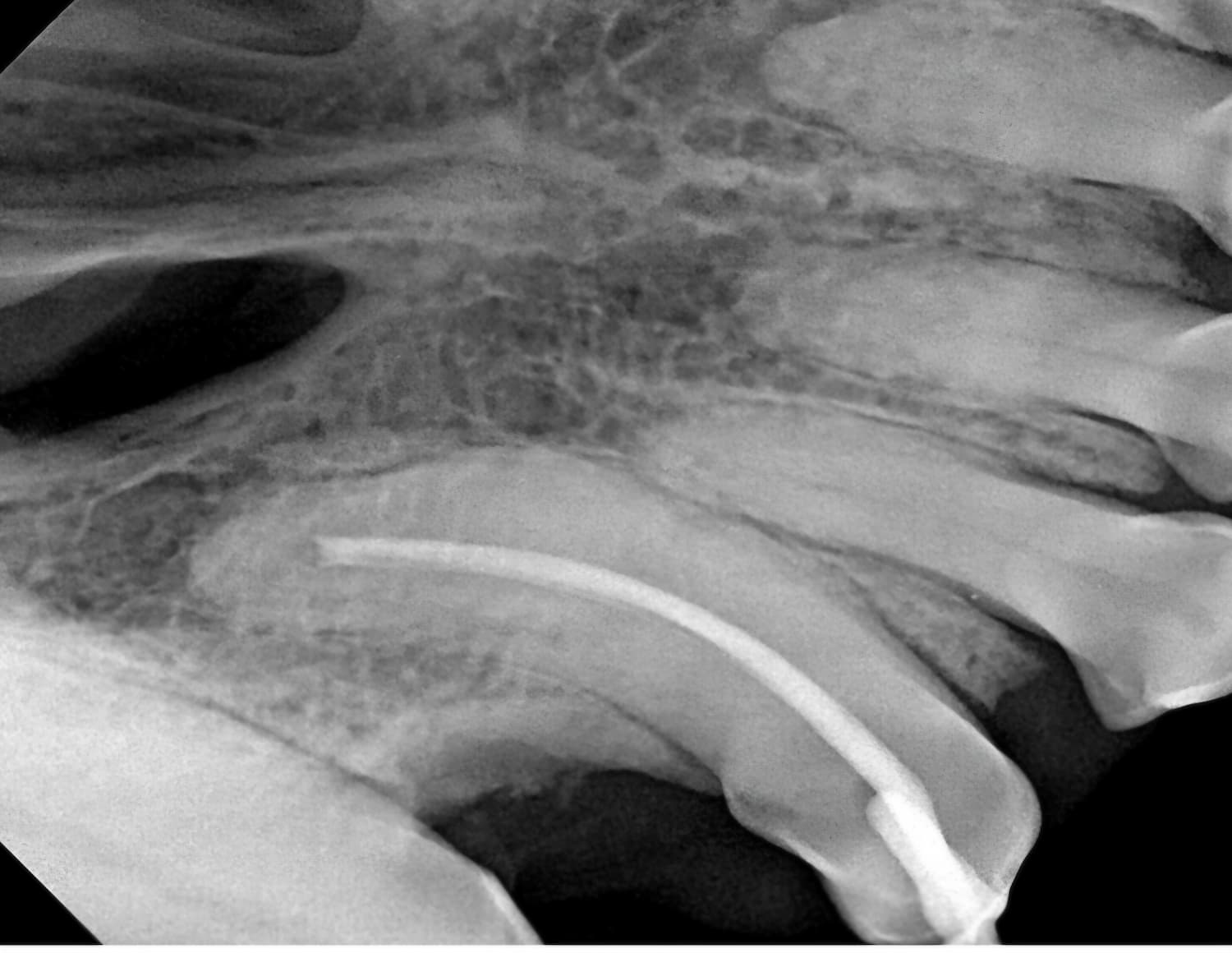
Frequently Asked Questions About Endodontics (Root Canal Therapy)
What is root canal therapy, and why is it recommended for pets?
Root canal therapy, also known as endodontic therapy, is recommended for certain teeth to maintain a functional, pain-free mouth. The procedure involves cleaning and disinfecting the inside of the affected tooth and sealing it to prevent future infections, helping to preserve the tooth and avoid extraction.
How long does it take for a pet’s tooth to heal after root canal therapy?
After root canal therapy, healing typically takes around six months, though it may take longer for the tooth to completely recover. Radiographic evidence is used to monitor the healing process, and in some cases, additional treatment may be needed if the infection persists.
How can I determine if my pet is a candidate for root canal therapy?
To determine if your pet is a candidate for root canal therapy, it’s important to consult with your veterinarian. They will assess the tooth’s condition and overall oral health to decide if the procedure is the best option to relieve pain and preserve the tooth.


